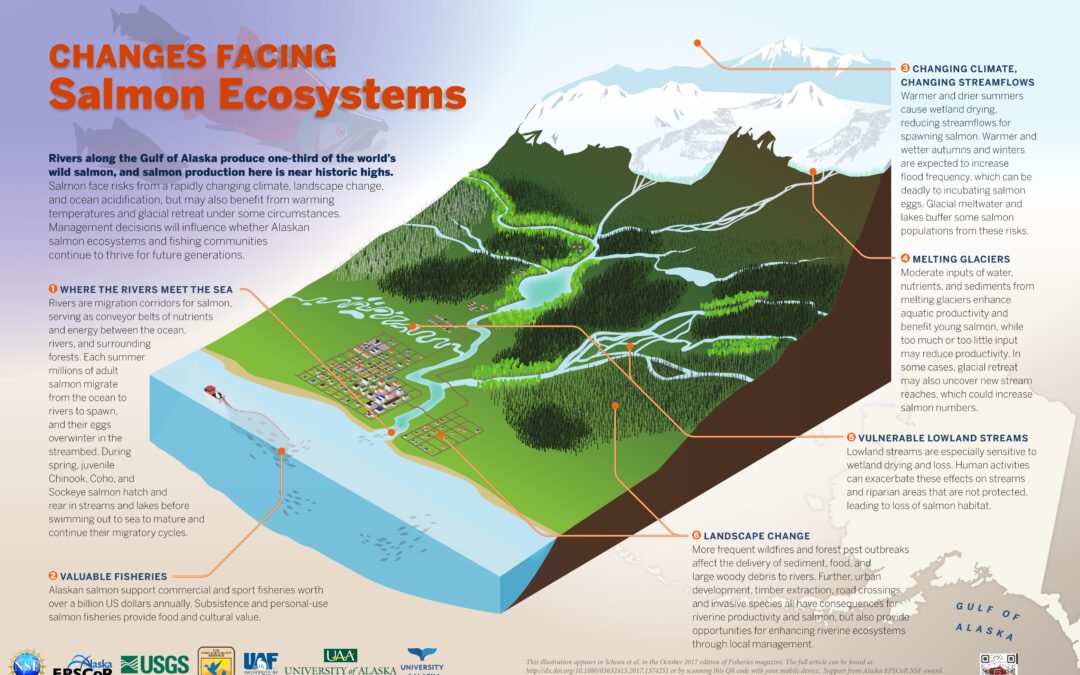Rivers along the Gulf of Alaska (which includes the Kenai River) produce one-third of the world’s wild salmon, and overall salmon production here is near historic highs, despite many struggling populations of species like Chinook and coho salmon. Wild salmon face risks from a rapidly changing climate, landscape change, and ocean acidification – among other threats, but may also benefit from warming temperatures and glacial retreat under some circumstances. Management decisions will influence whether Alaskan salmon ecosystems and fishing communities continue to thrive for future generations. Understanding how we can best steward wild salmon for future generations requires that we are humble and always strive to place our understanding in the “the big picture” of a complex ecosystem.
The poster above highlights some of our challenges and opportunities. It is available free for download. For more details and references, see the journal manuscript where it is published (Schoen et al. 2017), or check out the Powerpoint presentation available for download from Dr. Erik Schoen at University of Alaska Fairbanks. Kenai Watershed Forum staff Benjamin Meyer is a co-author of this work. Inspiration credit for the poster also goes to the Alaska Climate Science Center, who produced another excellent poster focused on similar themes in southeast Alaska.



